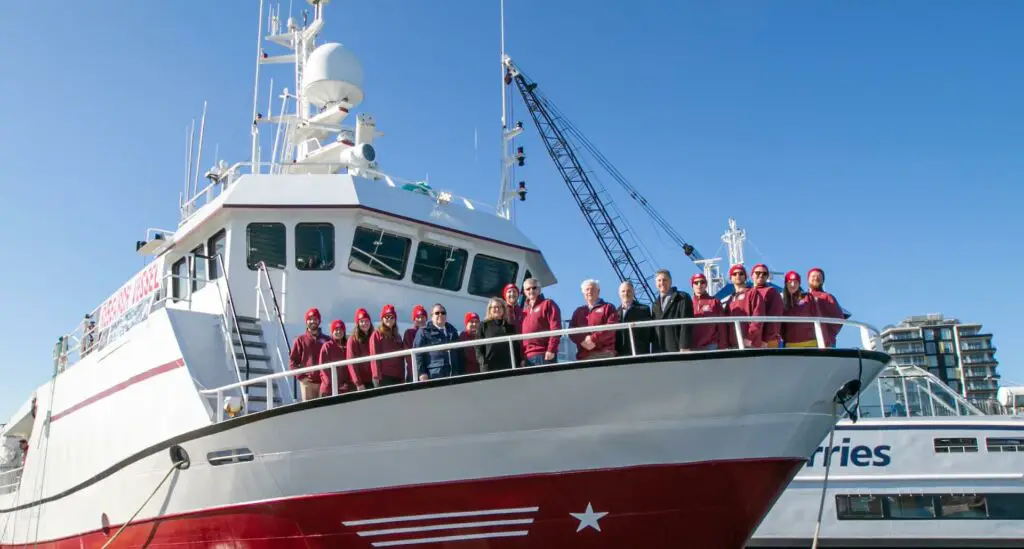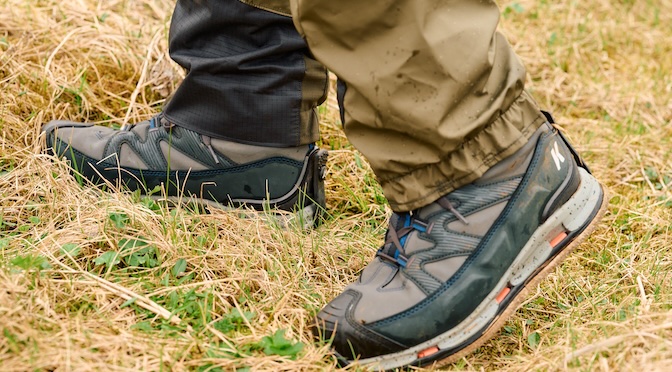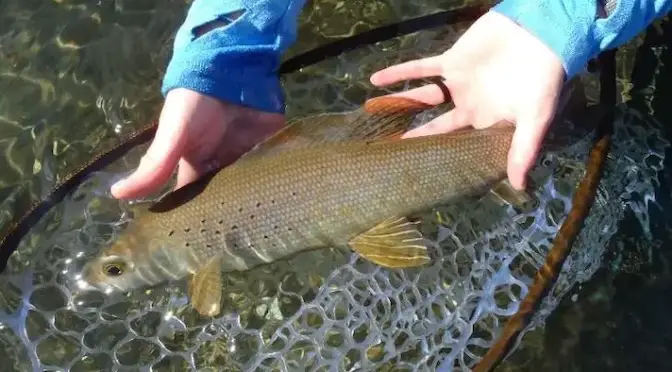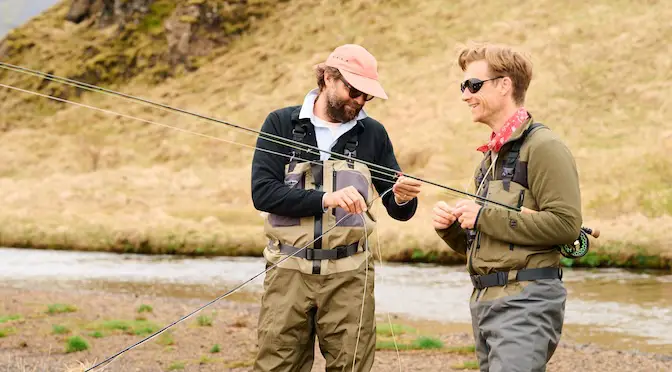Last updated on January 15th, 2024.
- Wading Wisdom #13 – Simon Gawesworth - July 7, 2025
- On the Water with the Korkers Bantam Lite - June 26, 2025
- How to Find Trout in Rivers & Streams Anywhere - June 13, 2025
Saving endangered species such as salmon needs a global effort.
The International Year of the Salmon attempts just that. We spoke to Dr. Vladimir Radchenko, Executive Director of the NPAFC (North Pacific Anadromous Fish Commission) about the project. The NPAFC is an international inter-governmental organization that was established by the Convention for the Conservation of Anadromous Stocks in the North Pacific Ocean almost 30 years ago.
What’s the idea behind “The International Year of the Salmon”?
One of the main NPAFC objectives is to coordinate and assess scientific studies of anadromous stocks and ecologically related species in the Convention Area. Our goal is to review and coordinate the collection and exchange of scientific data and specimens, other scientific exchanges, and to review proposed scientific research programs. Every five years, the NPAFC adopts a Science Plan for cooperative scientific research.
The overarching hypotheses that emerged from the results of scientific research under the first NPAFC science plans since 1995, as well as from research by other organizations and independent scientists, are the following. Anadromous stocks play an important role in North Pacific marine ecosystems. There is a close relation between climate and climate change and subsequent changes in marine productivity and the survival of anadromous stocks in the ocean.
In 2007, leading Canadian scientist Dr. Richard J. Beamish started a project to develop an international strategic plan to coordinate research among countries that will improve the forecast of the impacts of a changing climate on all aspects of the life history of Pacific salmon. As a result of three workshops and wide communication within the frame of the Long-term Research and Monitoring Plan (LRMP), Dr. Beamish proposed to establish the International Year of the Salmon in 2012.
The proposal identified some of the major climate and ocean influences on Pacific salmon production to show that there will be major changes in abundance trends in the future. The major expected benefit of the International Year of the Salmon is the focus of resources on understanding mechanisms that regulate Pacific salmon production. The program includes large-scale ocean studies, information exchange on freshwater research, and a team approach to analyzing and modeling the data. The goal was to ensure that each Pacific salmon producing country has the information to make management decisions that optimize economic opportunities relating to Pacific salmon production while maintaining responsible stewardship. That is, to improve predictability of trends in production and catches of Pacific salmon and fisheries management.
In 2014, NPAFC started planning the International Year of the Salmon (IYS) project to facilitate the NPAFC Science Plan implementation and attract the public attention to problems of anadromous fish conservation. After the NPAFC adoption in 2016, the project’s scope expanded to address ocean climate change impacts to human and salmon ecosystems and possible societal responses to emerging challenges. Due to a recent decline in Pacific salmon stocks, especially in southern parts of their range, there is a rising problem how to restore salmon resilience by improving the fisheries management and properly aiming conservation efforts that is also addressed by the IYS.
The global pandemic has seen a rise in national interests rather than joint efforts.
What makes you optimistic that a project like yours can work across borders?
The IYS implementation has started before the global pandemic. Despite difficulties brought by COVID-19, scientists of all NPAFC member states have the firm intention to bring the matter to a successful conclusion. Two pre-cursor cruises in the Gulf of Alaska were completed in winter of 2019 and 2020. The intent of these cruises was to demonstrate that international collaboration could be effective. It was also meant to provide baseline measurements of major pelagic ecosystem components including abundance of Pacific salmon in high seas in the winter season.
Twenty-one scientists from Canada, Japan, the Republic of Korea, the Russian Federation, and the United States were aboard the R/V Professor Kaganovskiy for five weeks to study the ocean-going lives of Pacific salmon species across the Gulf of Alaska in February–March 2019. Twelve scientists from Canada, the Russian Federation, and the United States repeated the most part of survey in March–April 2020. We can say that our achievements in the past guide us towards success of the 2022 IYS Pan-Pacific Winter High Seas Expedition and the IYS program as a whole.
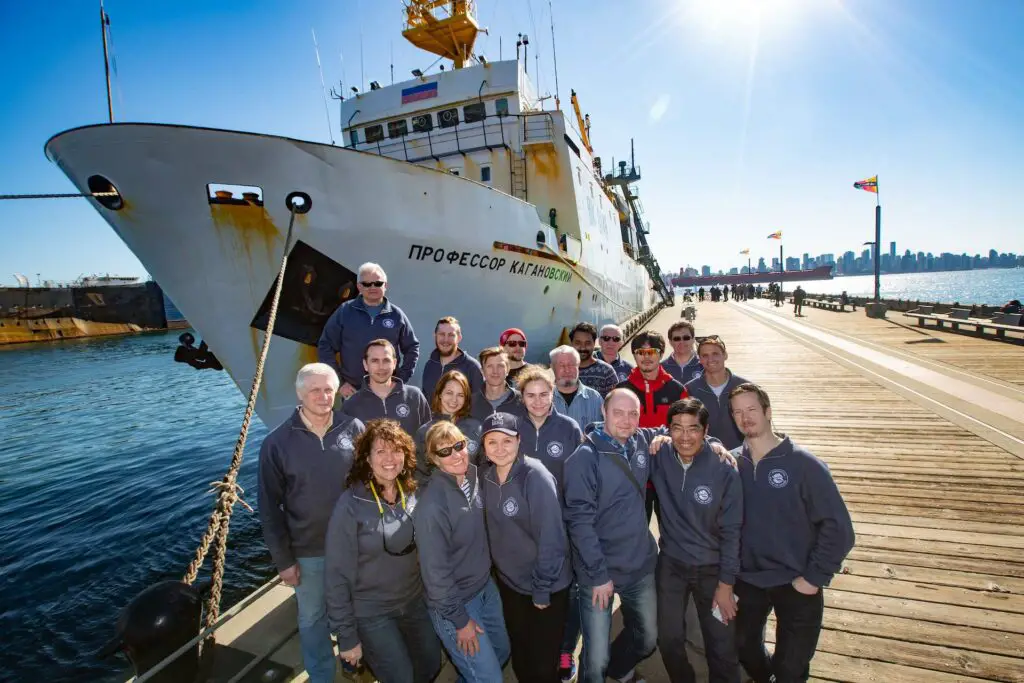
What are some of the key aspects that you’ll be working on over the coming years?
I mentioned the 2022 IYS Pan-Pacific Winter High Seas Expedition is the central IYS signature project. The survey area which is the whole breadth of the northern North Pacific Ocean is divided by five zones that should be explored by four research vessels: Canadian R/V Sir John Franklin, U.S. R/V Bell M. Shimada, Russian R/V Professor Kaganovskiy, and R/V TINRO. Each zone will be explored from 28 to 45 days using a systematic survey design with a grid of stations placed at 60 nm intervals on north/south transects that are separated by 120 nm.
It is expected that each vessel will cover two stations per day that will consist of similar samples using CTD + rosette cast to 1,000 m; plankton net (Bongo or Juday net, or both, vertical, 0–200 m); Methot or Mockness frame trawl; and midwater trawl to fish in upper 50 m water layer. In addition, a suit of underway measurements will be conducted including multi-frequency acoustic observations, marine mammals and birds watching, and macroplastic pollution observation. This expedition will collect an enormous array of data on salmon wintering in high seas. Analysis of these data will give us answers to many question on salmon ecology, survival, and stock productivity in ocean conditions under the influence of climate change.
The warming ocean can adversely affect Pacific salmon growth. Extended warming periods may decrease the availability of lipid-rich zooplankton and forage fish resources and reduce energetic status of immature salmon that may negatively affect their survival. On the other hand, growth and maturation rates are accelerated in warmer conditions. Some salmon species tend to return for spawning at an earlier age that may negatively affect the quality and adaptability of progeny. Change in the dominant species composition and distribution could affect location and timing of salmon fisheries. With variable environments, modifications to the timing and the size of juvenile fish at release will likely be required to optimize hatchery production. Models incorporating fish mortality and various environmental factors should improve the ability to forecast returns of salmon stocks and recommend fishery management and stock conservation measures to ensure sustainability and health of salmon populations.
Then, the IYS program should be concluded in 2022, NPAFC and the North Atlantic Salmon Conservation Organization (NASCO) started to prepare the IYS concluding event, an international symposium on Salmon in a Rapidly Changing World: Synthesis of the International Year of the Salmon and a Roadmap to 2030. It will be held in Vancouver in October 2022.
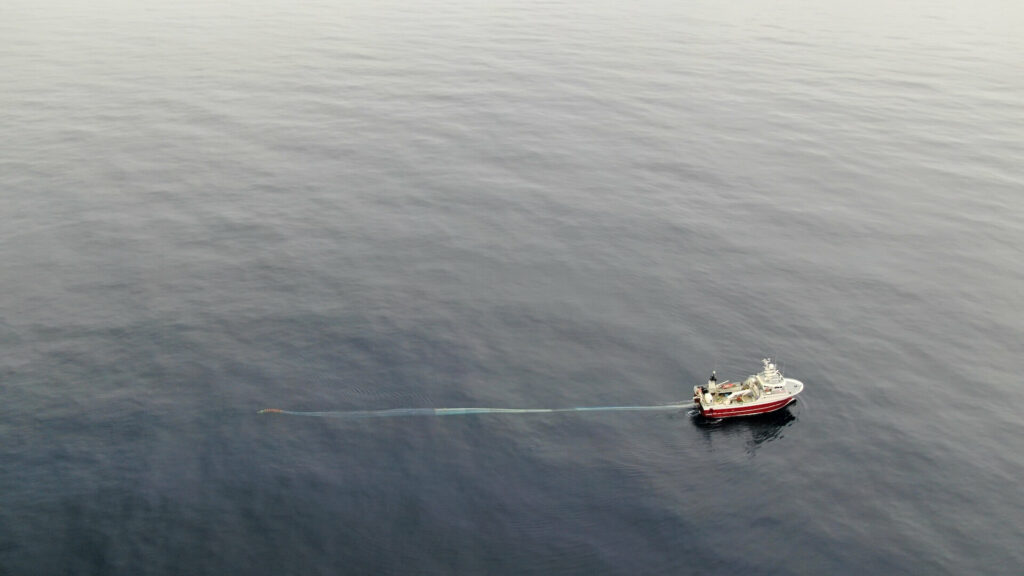
What’s the end goal of your project?
The end goal is to restore and maintain wild Pacific salmon populations and their habitats. The plan affirms that Pacific salmon face changing ocean and freshwater habitat conditions, less predictable returns, and declines in populations, and acknowledges the many challenges to salmon management based on the complex life histories of salmon. However, the situation hast not improved much to this date. As we leant from the IYS experience, the broader ecosystem considerations need to be taken into account to develop a new understanding on the salmon life cycle to conserve stocks efficiently.
The NPAFC and the North Pacific Marine Science Organization (PICES) have submitted a concept proposal for a program known as BECI (Basin-Scale Events to Coastal Impacts) to the UN Decade of Ocean Science for Sustainable Development (UNDOS), with the goal of developing and implementing a new collaborative ocean intelligence system to assess an impact of a changing ocean on coastal socio-ecological system using salmon as an exemplar. This project requires high levels of interest and investment to succeed in informing decisions on fisheries management, compliance, food security, ecological restoration, and much more. In 2022, BECI will launch with the Pan-Pacific Winter High Seas Expedition. Expedition observations on salmon ecology, distribution, and abundance across the North Pacific Ocean will be a core of the BECI experimental approach. If BECI will be successfully launched, large-scale integrated surveys in summer and winter times repeated at least twice until 2030 will establish a comprehensive baseline for the program.
Since the IYS program will be officially completed in 2022, the NPAFC and the North Atlantic Salmon Conservation Organization (NASCO) are preparing the concluding event: international symposium titled Salmon in a Rapidly Changing World: Synthesis of the International Year of the Salmon and a Roadmap to 2030. It will be held in Vancouver, B.C. in 2022. The symposium outcome will form the basis of the NPAFC Science Plan for 2022–2027, and the IYS legacy will be continued with the new research projects.

Salmon have an impact (socially and ecologically) far beyond their habitat.
How can people not familiar with these interdependencies learn about this
and hence the importance of salmon for the entire ecosystem?
Since the initial stages of the IYS implementation we informed people about related activities via social media and the IYS website. The main tools for society engagement are the IYS-related events and projects. For the time of IYS implementation, 189 events and 63 projects were announced and described in detail. Geography of these projects and events is round-the-globe—from the Pacific Coast of Asia to Americas and then into Europe. Among them, I would like to mention as examples two mentioned Gulf of Alaska cruises, a successful symposium on ‘Climate Change and State of the Salmon’ hosted by Norway in Tromsø, Japanese summer salmon research cruise in the central Bering Sea, river restoration project in Portugal, two IYS photo contests, and many others. In 2018–2020, a significant part of this information was reflected in twelve mirror websites in languages of European and Asian countries supported the IYS.
The NPAFC Secretariat staff working for the IYS published many popular science and popular press articles. Serial workshops and seminars are continued to be held to engage different group of specialists including scientists, fishery managers, students, indigenous communities, NGOs, etc. A new IYS Seminar Series Exploring Frontiers of Salmon Research in Open Ocean Ecosystems was announced in August 2021. This series will help build awareness and engagement in scientific communities and the broader public leading up to the IYS 2022 Pan-Pacific Winter High Seas Expedition. The Seminar Series will involve presentations and panel discussion sessions with salmon scientists, covering a range of high-seas expedition-related topics such as the rationale for high-seas research, the role of autonomous vehicles and salmon genomics. The first seminar, Salmon in the Open Ocean: Can High Seas Research Inform Challenges in Salmon Management? was held on September 8th and included a panel made up of Dr. Dick Beamish from Canada, Dr. Shigehiko Urawa from Japan, Drs. Nate Mantua, Laurie Weitkamp, and Brian Wells from the United States. Second IYS seminar (of total seven seminars in this series): The secret lives of salmon in the high seas: Findings from the 2019 and 2020 Gulf of Alaska Expeditions, will be held on September 29, 2021.
Indeed, if the IYS program would have more financial resources, it would expand opportunities for the IYS-related projects and events. Sometimes, people submitted information about salmon-related events and projects with expectation to receive additional funding from sponsors. In conditions of modest IYS budget, we should concentrate on a few signature projects including high seas expedition, Likely Suspects Framework, and salmon data mobilization.

How can fly fishermen and women get involved in your project?
As I mentioned, anybody can suggest their own project and/or event and obtain at least informational support from the IYS. People who are eager to give something back to the community or make a difference to the society and environment around them can find their own place in salmon conservation, habitat restoration, and educational projects. As for the fly fishermen, we closely cooperate with the Sport Fishing Institute of British Columbia, which is a non-profit society promoting sustainability of salmon resources in partnership with Fisheries and Oceans Canada and support by the Pacific Salmon Foundation. One of the SFI Directors, Dr. Gerald Kristianson serves as the Canadian Representative in the NPAFC. Since SFI promotes several salmon conservation projects and its members collect a wide array of salmon data in many places, which are not under federal scientists’ supervision, any support to SFI can be considered as an involvement in activities shared by the IYS.
Women are the best teachers for their children. Proper environmental education in family is a vital contribution to formation of an environmentally concerned generation, who will care about nature, clearly understand such problems as climate change, environmental pollution, human-induced losses in biodiversity and wildlife habitats, and undertake effective actions necessary to protect the Mother Nature. For the younger generations, NPAFC provides an opportunity to test their interest in international governmental organizations, fisheries management, salmon biology, ecology, and fisheries enforcement by participating in the internship program. NPAFC interns usually volunteer to assist the IYS team and performed multiple tasks in the IYS project. This positively affects their future careers. From 13 past interns, seven are currently employed by governmental agencies and institutions in the NPAFC member countries, included three—by Fisheries and Oceans Canada. Two past interns are employed by environmental and humanitarian NGOs, and others continue their studies. This is also a form of involvement into the IYS, small in number but very effective.
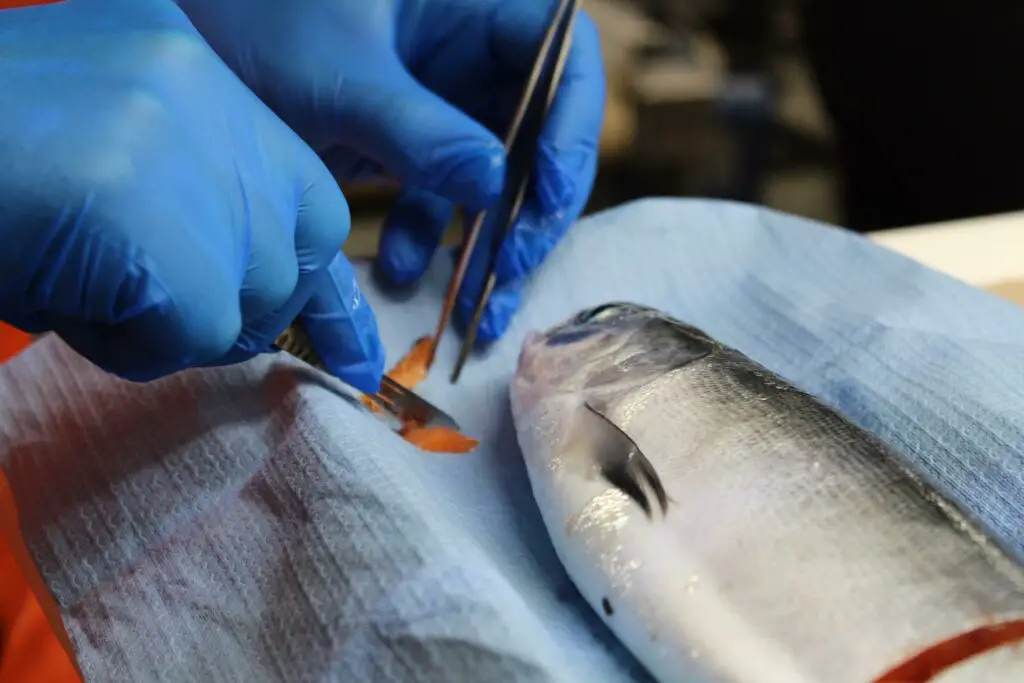
If you look 25 years ahead, what’s your vision regarding salmon?
Successful implementation of such large program is impossible without a hint of optimism and confidence in the success of the work. When we started five years ago, expected outcomes included the expectation that, at the end of the program, the integrated international research community will be equipped to respond to a rapidly changing environment. The idea was an effective research governance model, tools and methods, salmon-related data and information, and new generation of researchers. The public will adopt behaviors that support the sustainability of salmon, regulators and decision-makers will act on policy management actions that promote the sustainability of salmon, and funders will contribute resources to support these conservation and research efforts. However, six years occurred to be too short to get such comprehensive outcome. Likely, there are good milestones to reach in a 25-year term.
However, they will be reachable, if efforts aimed on salmon stock conservation, research, and proper fishery management will be substantially increased. People still do not accomplish enough to protect Pacific salmon and increase their resilience in a quickly changing environment. Multiple barriers to spawning grounds still exist, habitat restoration under climate change impact occurs to be not effective. If our efforts to protect Pacific salmon will be insufficient, an increase in salmon production will be provided by net pen aquaculture. Emphasis on salmon propagation in hatcheries will gradually shift from creating additional fishing opportunities, including sports and subsistence fishing, to restoring depleted salmon stocks. Wild salmon will be the same rareness as whales, and touristic companies will organize tours to see wild salmon in the wilderness.
It all depends on us living today, which imagination will be closer to reality in 25 years from now.


